Ecuador earthquake of 7.8 magnitude kills dozens
- 4 hours ago
- Latin America & Caribbean
A powerful 7.8-magnitude earthquake in Ecuador has killed at least 77 people and injured more than 500, Vice-President Jorge Glas says.
The quake, Ecuador's largest since 1979, hit at 18:58 on Saturday (23:58 GMT) near the northern town of Muisne.
Widespread severe damage is reported, with a bridge destroyed as far south as Guayaquil about 300km (190 miles) away.
President Rafael Correa, who is flying back from a trip to Italy, has decreed a state of emergency.
He said: "This is a very painful test. I ask the country to be calm and united... Let's be strong; we will overcome this."
He added: "Roads and hospitals can be rebuilt; you cannot recover lost lives. That's what hurts the most."
Mr Glas said that at least 77 people had died and 588 had been injured, adding that the figures could rise as a number of affected areas had not yet been reached.
He called for calm, particularly in the city of Portoviejo, amid reports of a "lack of public order", and said that 10,000 troops and 3,500 police had been mobilised for the affected areas.
Gabriel Alcivar, mayor of the town of Pedernales, which is close to the epicentre, said: "We're trying to do the most we can but there's almost nothing we can do."
He said dozens of buildings had been flattened and looting had broken out.
"This wasn't just a house that collapsed, it was an entire town," Mr Alcivar said.
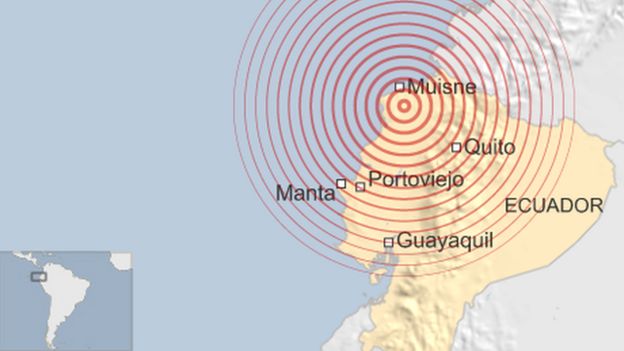
Carla Peralto, a resident of Boyaca, one of the worst-affected areas, told the BBC: "I never felt something like that in my life. It was so strong. I was feeling very, very scared... I was thinking 'God, please stop that because maybe I die today'."
Serious damage was also reported in the city of Manta, with an airport tower among the buildings destroyed.
Manta resident Ramon Solorzano told Reuters: "Most people are out in the streets with backpacks on, heading for higher ground. The streets are cracked. The power is out and phones are down."
The US Geological Survey said the earthquake struck at a fairly shallow depth of 19.2km (11.9 miles), about 27km from Muisne in a sparsely populated area.
There have been a number of aftershocks, the biggest at 5.6.
The Pacific Tsunami Warning Centre issued a message saying that the threat of a tsunami had now mostly passed and that any remaining risk should be evaluated by local authorities.
However, it earlier said tsunami waves reaching 0.3 to one metre above the tide level were possible for some coasts of Ecuador. Any damage that had occurred might not be visible until daylight.
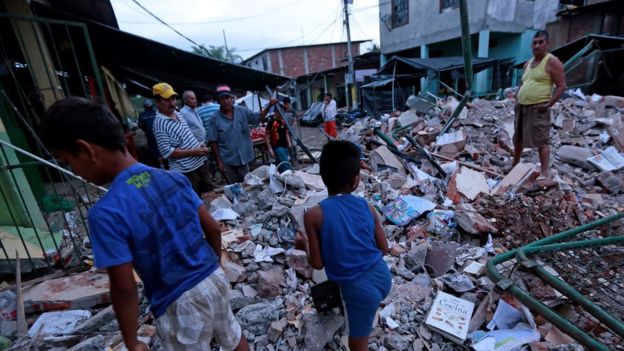 AFP
AFP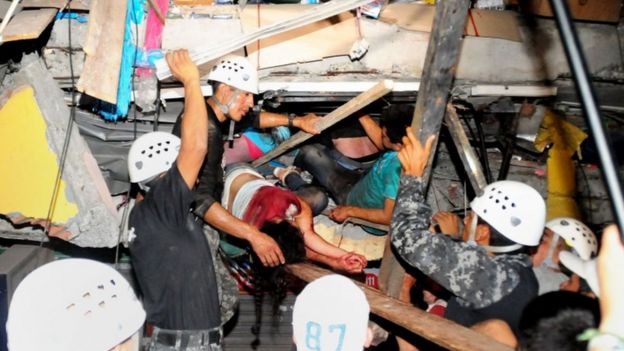 AFP
AFP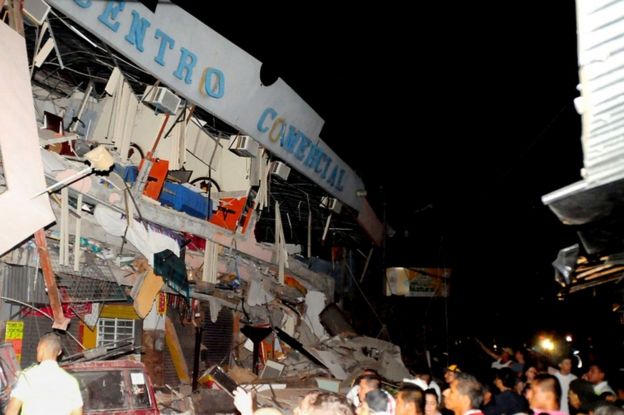 AFP
AFP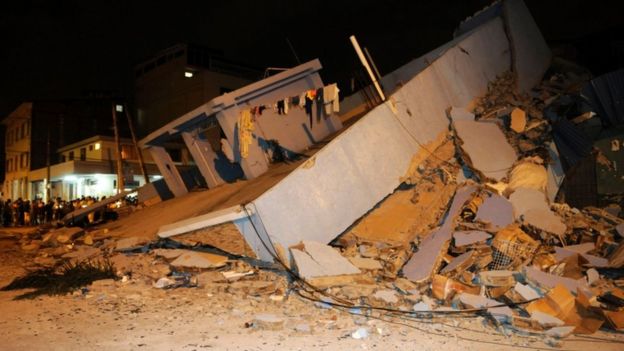 AFP
AFP AFP
AFP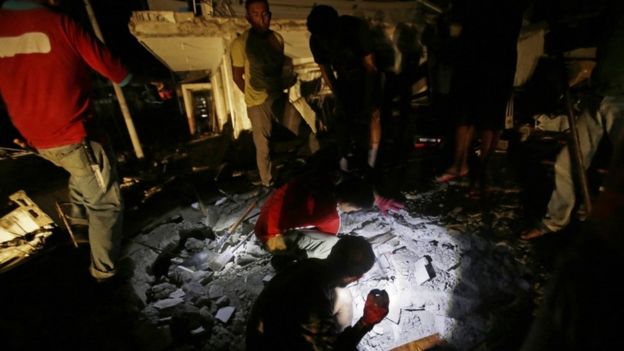 AP
AP
Quito resident Cristian Ibarra Santillan told the BBC he grabbed his dog and hid under a table, but when he realised the quake "wasn't going away and that I might be found here if the worst happened" he ran out into the street.
"We could see the electricity lines shaking - in other parts of the city, they've collapsed."
Work at the main oil refinery at Esmeraldas was temporarily halted as a precautionary measure.
Many regional leaders, including the presidents of Peru, Colombia and Venezuela, have expressed solidarity with Ecuador.
The quake was also felt in Colombia, where patients in a clinic in the city of Cali were evacuated from the building.
Analysis: Jonathan Amos, BBC science correspondent
Ecuador is well used to earthquakes. There have been seven 7.0 magnitude or greater events within 250km of this latest tremor since 1900. And some of these have resulted in very considerable loss of life, not just from the shaking but also from tsunami waves.
The country sits on the so-called "Ring of Fire" - the arc of high seismic activity that extends right around the Pacific basin. At its location, Ecuador fronts the boundary between the Nazca and South American tectonic plates.
These are vast slabs of the Earth's surface that grind past each other at a rate of about 65mm per year. The Nazca plate, which makes up the Pacific Ocean floor in this region, is being pulled down (subducted) and under the South American coast.
It is a process that has helped build the Andes and Ecuador's many volcanoes, including the mighty Chimborazo.
Models that try to forecast the likely casualty numbers from the nature of the quake and local building construction methods indicate this event could be very serious, with the number of deaths running into the hundreds.

No hay comentarios:
Publicar un comentario